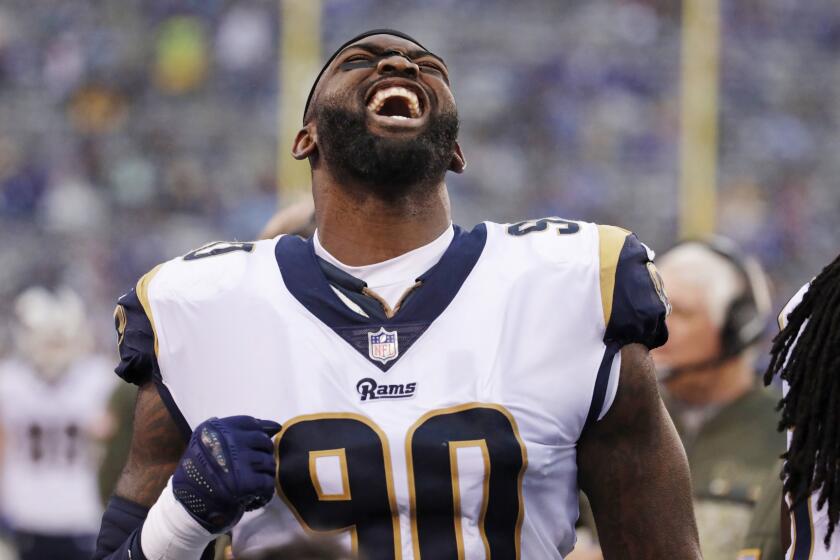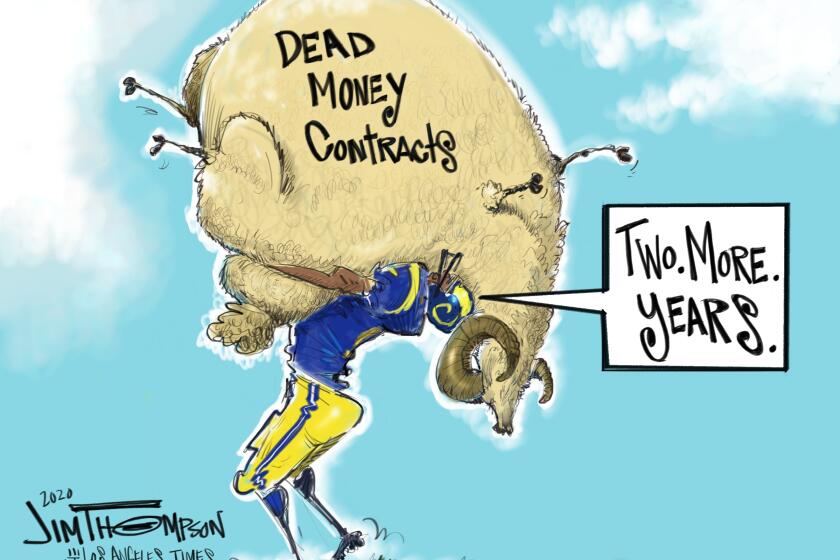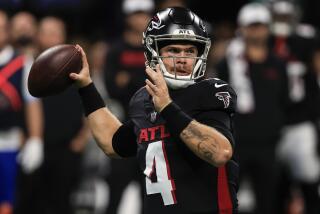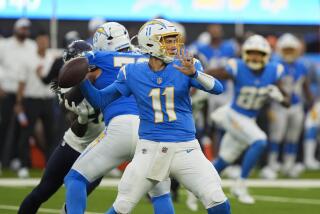What the Chargers’ draft needs are at each position
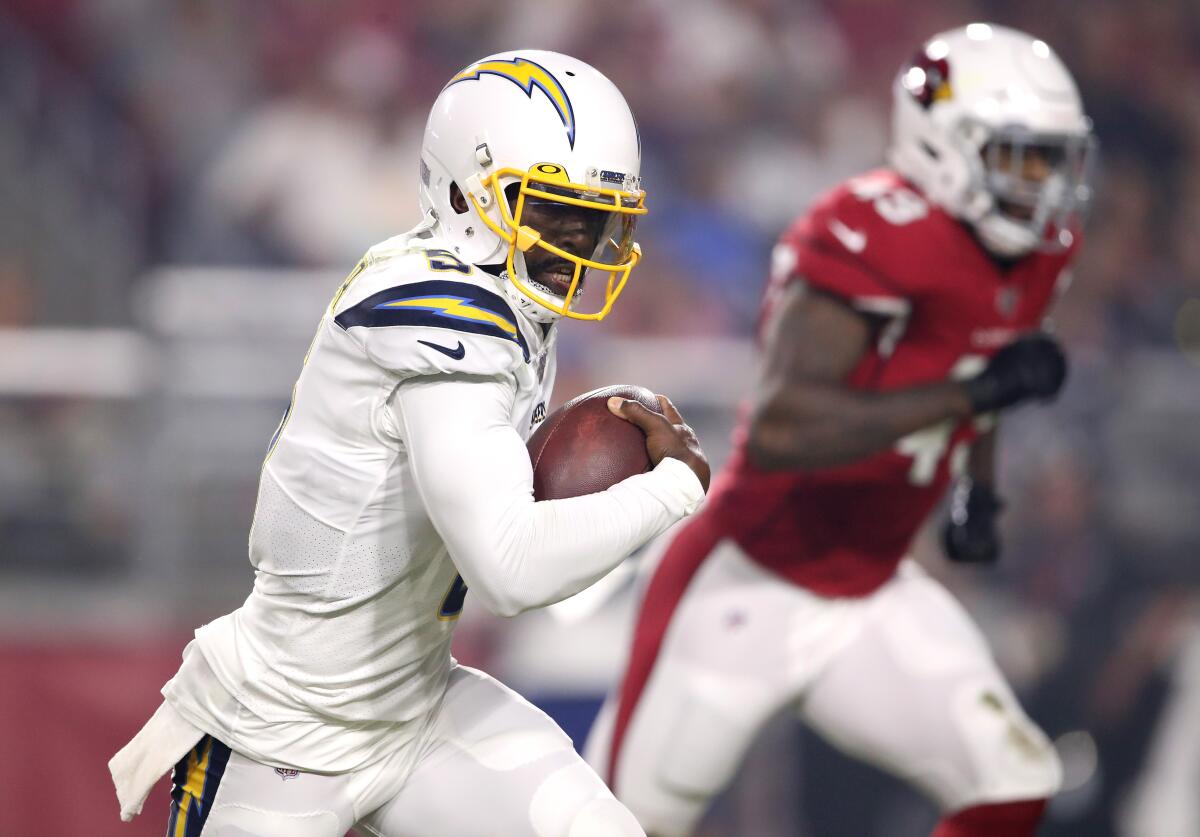
- Share via
The Chargers talked to Tom Brady, were linked to Teddy Bridgewater through speculation and now are a rumored destination for Cam Newton.
After 14 seasons of nothing but Philip Rivers, this has been the “Offseason of the Quarterback” for the Chargers, who so far haven’t actually added a quarterback.
That almost certainly will change next month at the NFL draft, and change early, with many forecasts having them selecting Justin Herbert or maybe Jordan Love at No. 6.
As of now, the chances of the Chargers signing Newton are unlikely. Unless that changes, the quarterback talk will only intensify as April 23 and the first round approach.
So far this offseason, the Chargers have bolstered their offensive line through a trade (right guard Trai Turner) and free agency (right tackle Bryan Bulaga).
Defensive lineman Michael Brockers will re-sign with the Rams after a deal with the Baltimore Ravens fell through.
They’ve reinforced two positions of need by adding a nose tackle (Linval Joseph) and a linebacker (Nick Vigil). They’ve also upgraded at cornerback by agreeing to terms with one of the best to work in the slot (Chris Harris Jr.).
Their personnel losses have been plentiful, including Rivers, left tackle Russell Okung, linebacker Thomas Davis, running back Melvin Gordon, defensive tackle Brandon Mebane, safety Adrian Phillips and fullback Derek Watt.
With slightly less than four weeks to go before the Chargers are officially “on the clock,” here’s a positional breakdown of their needs:
Quarterback
Veteran Tyrod Taylor is the starter for now, with 2019 fifth-round pick Easton Stick also on the roster.
Herbert, who played at Oregon, seems to make the most sense at No. 6, particularly after a Rose Bowl showing that highlighted his athleticism and ability to run.
Love is coming off a season in which he threw 17 interceptions for Utah State, the exact sort of shaky performance that brought Rivers’ historic tenure to an end.
As with any team looking for a potential franchise quarterback, the Chargers no doubt also are intrigued by Tua Tagovailoa, who is coming back from a season-ending hip injury. But securing the former Alabama star probably would require moving up in the draft, at least ahead of Miami, which picks fifth.
The problem for Chargers general manager Tom Telesco is that the Dolphins have an abundance of draft capital — five of the first 56 picks — to move up if necessary, giving them significantly better leverage.
Running back
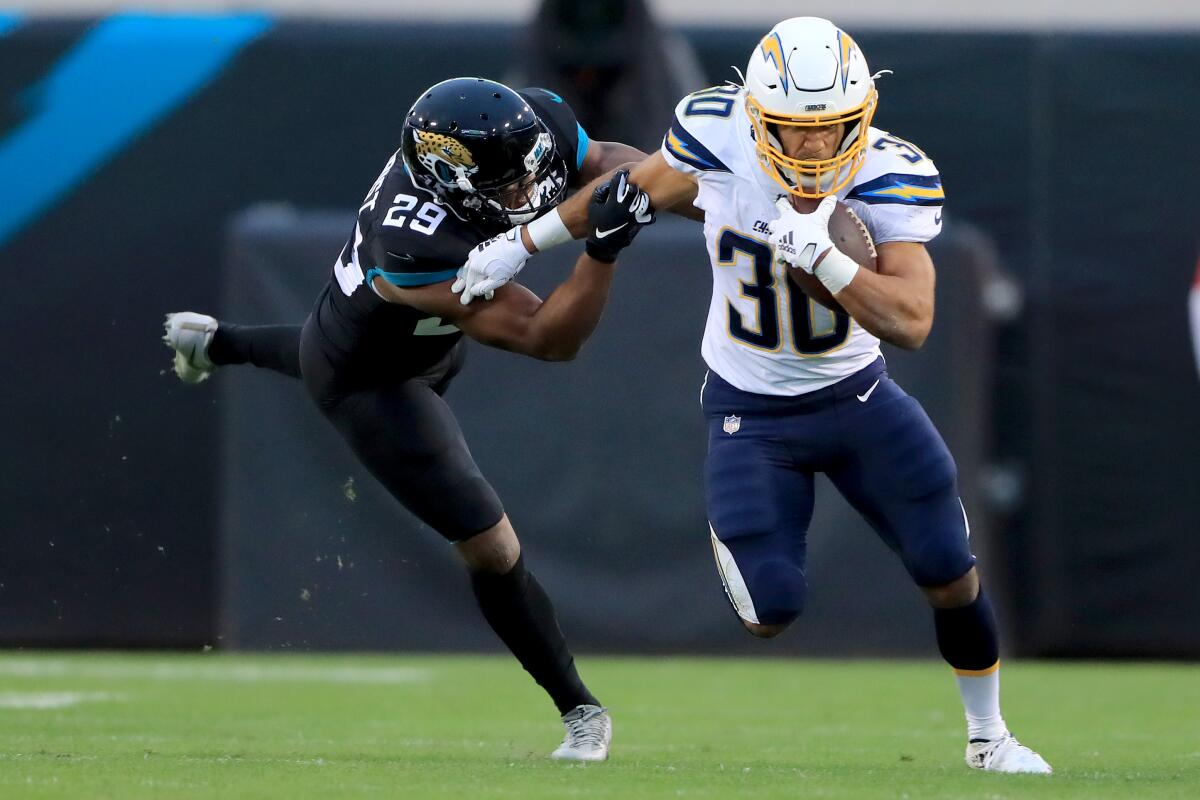
The Chargers re-signed Austin Ekeler three weeks ago and have Justin Jackson as the backup.
And that’s it on the roster right now, meaning they’ll add a few running backs before the start of training camp.
Along with using free agency, the Chargers probably will draft a running back, a position that history shows can be filled in the later rounds or even after the event has concluded.
Ekeler went undrafted in 2017 and Jackson was taken in the seventh round a year later.
Although the plan calls for Ekeler and his versatility to be featured, the Chargers would love to have multiple running backs who can be trusted and productive ... and stay healthy.
Offensive line
Turner and Bulaga represent clear improvement along an offensive front that struggled with consistency in 2019.
Center Mike Pouncey is trying to come back from season-ending neck surgery, with left guard Dan Feeney and backup Scott Quessenberry being the other options there.
The Chargers still could use a more proven left tackle and 38-year-old Jason Peters and his 15 seasons of NFL experience remain available in free agency.
One day after the Rams unveil their rebranded logo, the Chargers release images of a slightly altered lightning bolt.
Going younger would be an attractive alternative, and the 2020 draft class is loaded at tackle.
After picking sixth, the Chargers’ next selection is No. 37 overall, a spot where they could add a tackle.
Given the problems they had up front last season, the Chargers, barring injury, will open next season with at least three changes to the offensive line that finished 2019.
Receivers
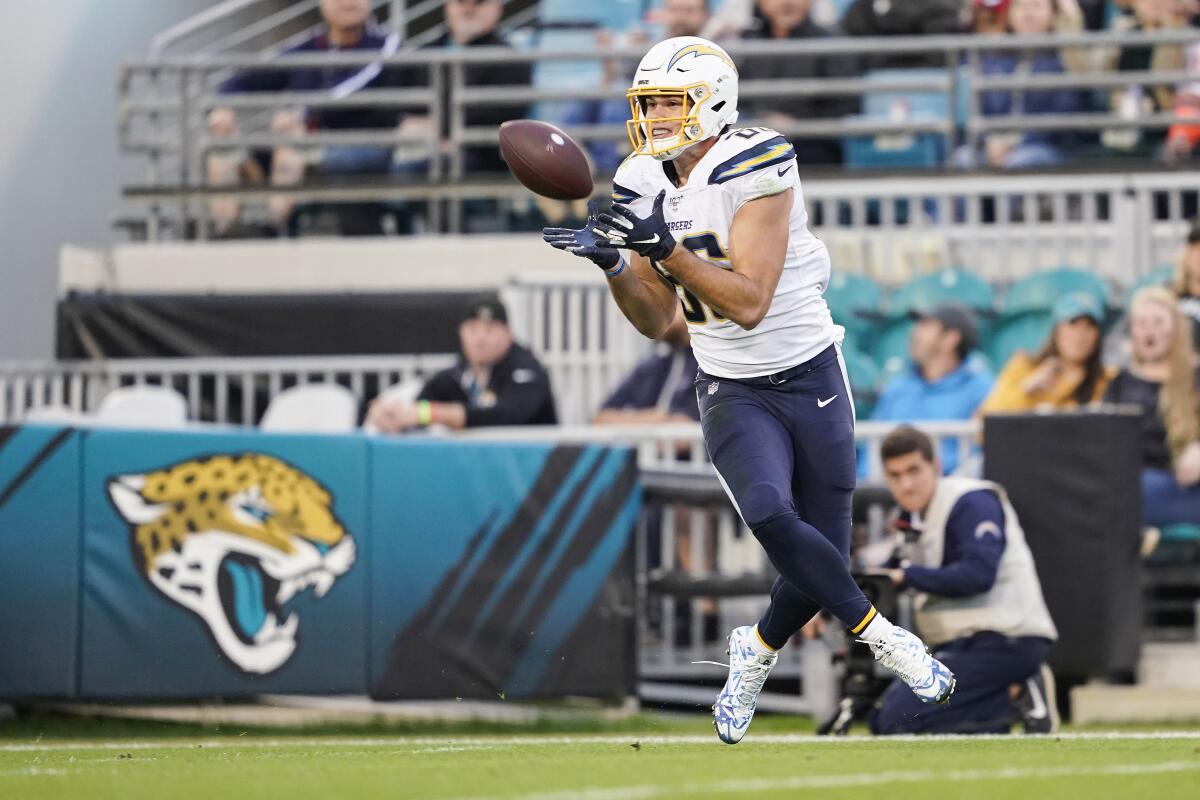
As with quarterback, wide receiver is a position the Chargers need to address but so far haven’t.
There currently is a significant void after Keenan Allen and Mike Williams, both of whom reached 1,000 yards in receiving last season.
This draft also is deep at receiver, the Chargers particularly in need of someone who can bring speed to the perimeter.
Hunter Henry and Virgil Green are the top tight ends, though both are tied to the Chargers for only one more season. Henry has been franchise tagged, and the Chargers are intent on eventually signing him to an extension.
With the lack of long-term security at the position, drafting a tight end is very much a possibility.
Defensive line
The Chargers are set at the edges with Joey Bosa and Melvin Ingram. But that situation is heading toward a significant change.
Bosa and Ingram are entering the final seasons of their contracts and re-signing both — given the cost of edge rushers — would seem to be an impossibility. So the Chargers could look to fortify the position with a draft pick.
Letters to the Los Angeles Times sports editor for March 28.
Just a year ago, they drafted Jerry Tillery in the first round with the idea he could beef up their interior defensive line. That didn’t work out in Tillery’s rookie season, his further development one key to the future success of this defense.
Linebacker
Even with the addition of Vigil, the Chargers figure to remain in the market for linebacker depth. They cut weak-side starter Thomas Davis in a salary cap move and lost Jatavis Brown in free agency.
As a rookie, Drue Tranquill emerged as a genuine fourth-round steal. He proved himself capable of starting, both on the weak side and in the middle.
Defensive coordinator Gus Bradley loves versatility and speed, and the Chargers are always looking to boost their roster with both.
Defensive back
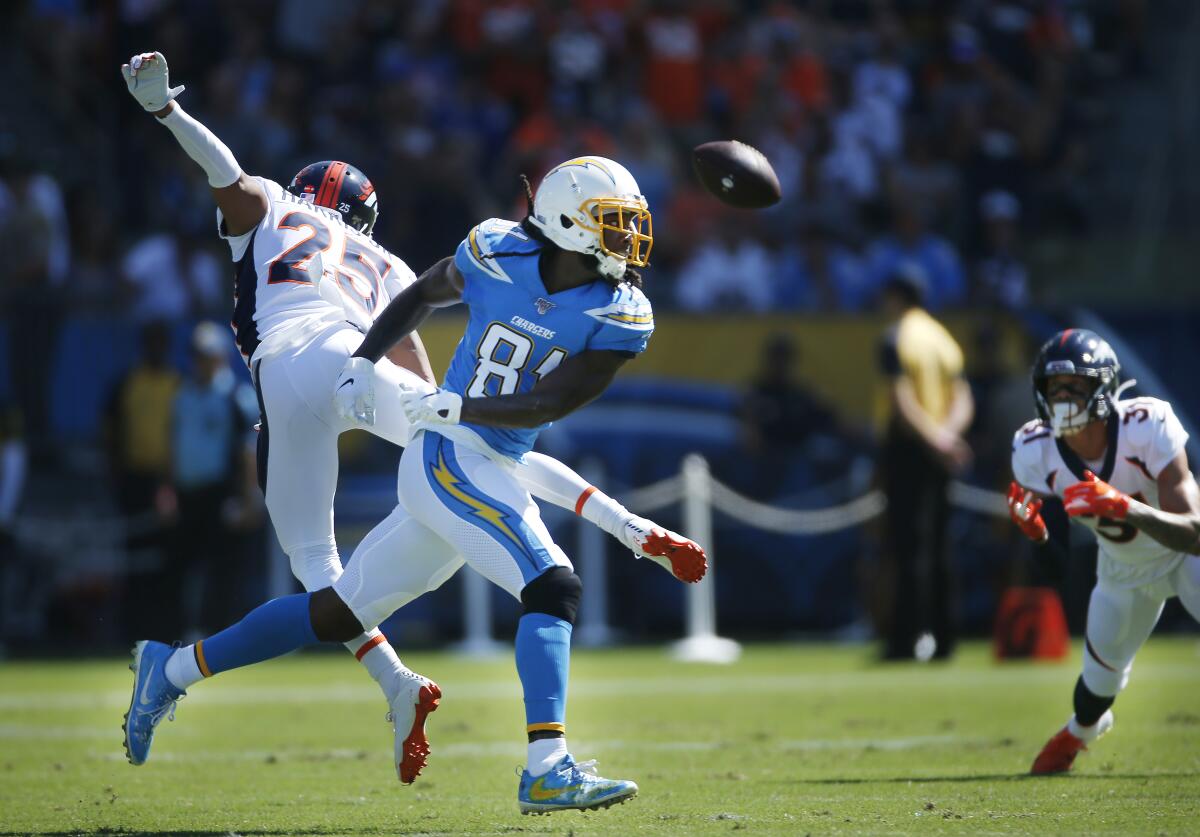
This is one area where the Chargers appear to be set. And deep. And talented. Adding Harris brought more swagger to a group that already included Derwin James and Casey Hayward.
Desmond King, an accomplished slot corner, has the versatility to move around, and Nasir Adderley, a second-round pick a year ago, should have plenty of motivation to prove himself after an injury shortened his rookie season.
Special teams
The Chargers’ need for speed extends to the kick-returning game. At the moment, King is the only option on the roster with notable experience handling that job. (Jackson returned five kickoffs in 2019. And no, Allen isn’t going to go back to fielding punts as he did early in his career.)
Over the next several weeks, this team certainly will be shopping for players with the ability to run back kickoffs and punts.
More to Read
Go beyond the scoreboard
Get the latest on L.A.'s teams in the daily Sports Report newsletter.
You may occasionally receive promotional content from the Los Angeles Times.

